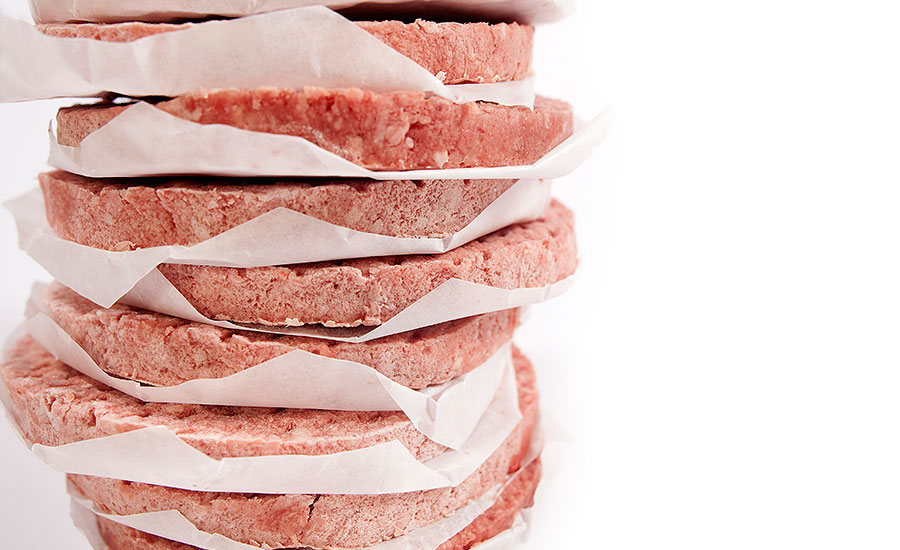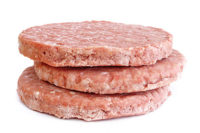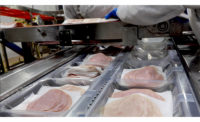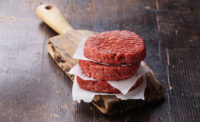The symbiotic relationship between interleaving and stacking addresses consumer demand for convenience and portion control and is evolving to meet the protein industry’s need for higher levels of automation and hygienics.
Commonly seen for beef patties, sliced lunch meat or fish fillets, interleaving involves flat or folded paper, film or foil that separates slices or servings to provide protection and portion control. Materials are generally greaseproof and include wax-coated paper and silicone parchment. Virtually all interleaving materials are freezer-compatible, and some withstand oven temperatures for a specified period.
To keep interleaving material clean and prevent it from being a source of contamination, one supplier has developed a patented wrapping system to enhance the level of protection against hazards in the ambient environment and maximize cleanliness at point-of-use.
Food safety concerns also influence machine design with product-contact parts and interleaving material paths designed to prevent contamination. Hygienic features include ground and polished welds, crevice-free construction, sealed bearings, antibacterial belting, wash-down compatibility and easy disassembly for cleaning. Original equipment manufacturers rely on a variety of food safety standards and guidelines including the North American Meat Institute’s 10 Principles of Sanitary Design. Other resources include 3-A Sanitary Standards, USDA, FDA, hazard analysis and critical control points programs and risk assessment processes.
Today’s interleaving equipment is also more automated. Higher levels of automation not only boost throughput and improve consistency, but also eliminate ergonomic hazards. Servo controls make machines extremely flexible. This flexibility makes it possible for the machine to accommodate a wide range of product shapes, thicknesses and weights. It also simplifies integration with upstream equipment such as slicers or downstream systems for stacking and conveying to primary packaging machines, typically horizontal wrappers or cartoners.
Stackers come in a variety of configurations and may involve drop, shuttle or star wheel handling and carrier board insertion. The fastest machines involve multiple lanes and can reach speeds up to 600 per minute.
Another automation option relies on robotics. Robots have made some inroads for meat cutting and are common components of end-of-line packaging equipment such as case packers and palletizers, but presently are rarely seen performing primary packaging functions for meat, poultry or seafood. However, pick-and-place functionality, wash-down-compatible construction and easy programming and integration make single-arm and delta robots well-suited for interleaving and stacking, as well as feeding downstream machines.
The development of collaborative robots, or cobots, could speed adoption of robots on meat, poultry and seafood packaging lines. Cobots can work safely alongside human operators. A combination of sensors, vision and anti-collision programming eliminate the need for traditional guarding and shrink the size of the work cell.
A cobot with two arms can mimic human movement and perform “two-handed” tasks. To maximize flexibility, end effector (gripper) changes can be automated. That means when it’s time to switch to a different product or task, the cobot can release one gripper and attach another. No operator intervention is needed. Gripper design has advanced too — to provide more finger-like functionality and the ability to gently handle fragile, irregularly shaped items.
As with traditional robots, setup for new products or tasks has been simplified. In many cases, the operator only needs to move the arm through the task or use a touchscreen to “teach” the cobot its path. There’s no complex coding. NP




Report Abusive Comment